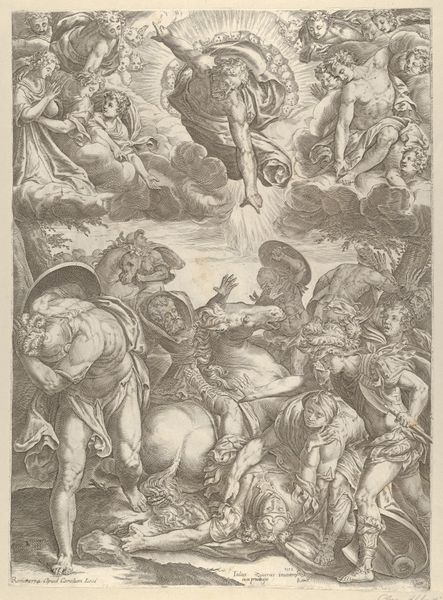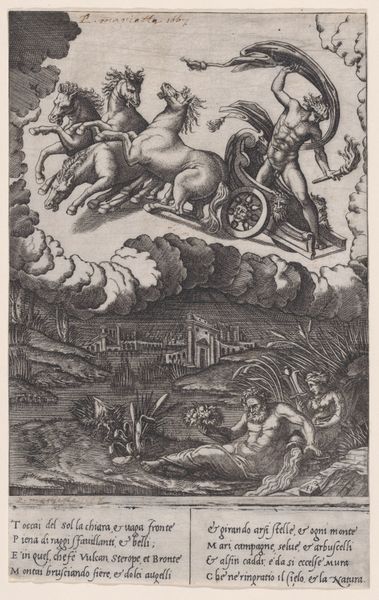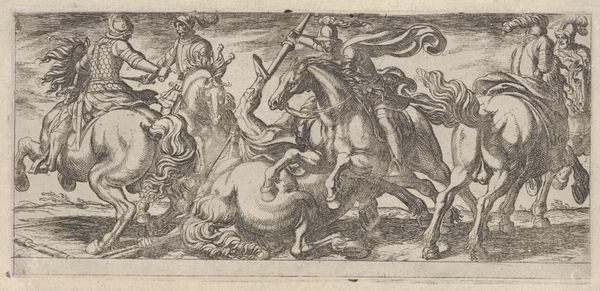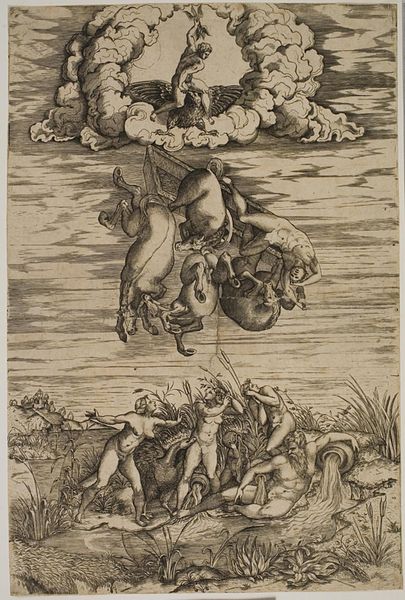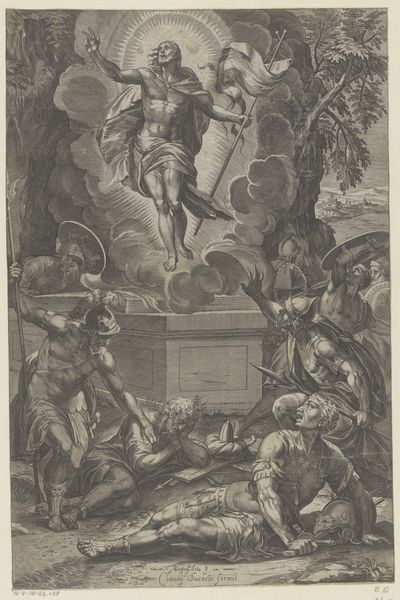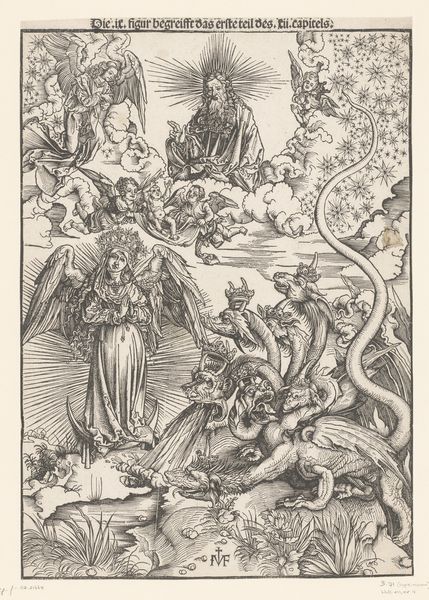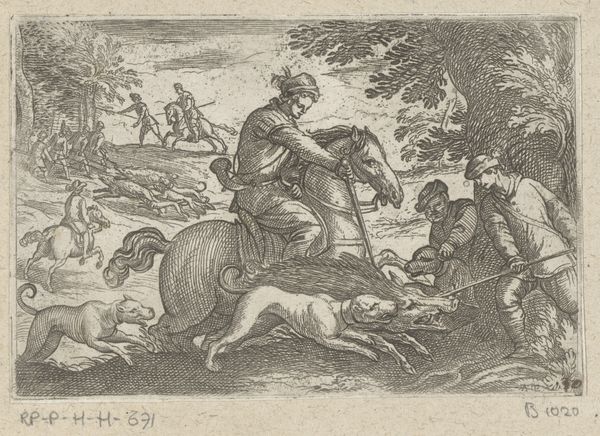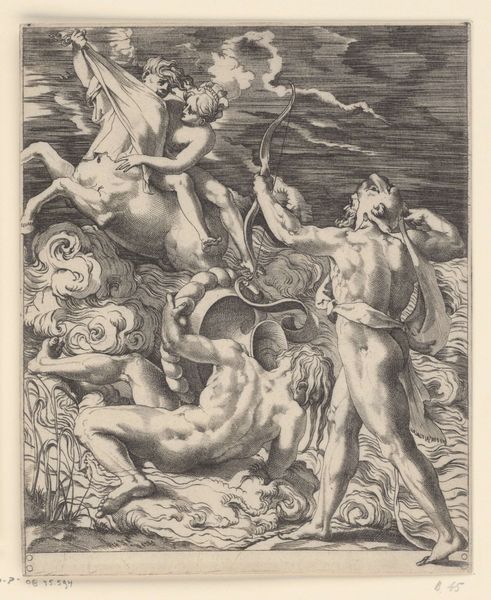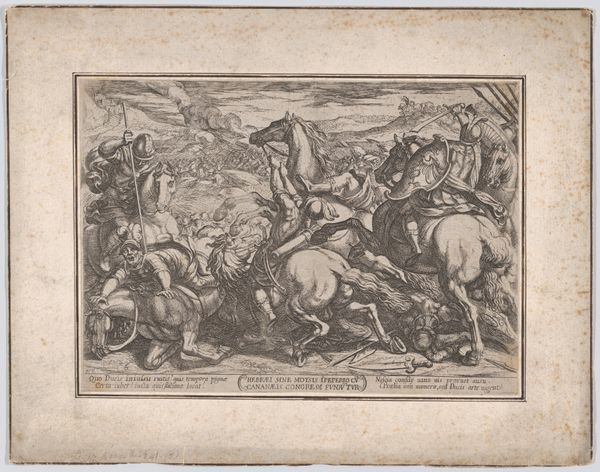
print, intaglio, ink, engraving
#
ink drawing
#
pen drawing
# print
#
intaglio
#
figuration
#
ink
#
line
#
history-painting
#
italian-renaissance
#
engraving
Dimensions: sheet: 48 × 38.2 cm (18 7/8 × 15 1/16 in.) plate: 46.4 × 36.3 cm (18 1/4 × 14 5/16 in.)
Copyright: National Gallery of Art: CC0 1.0
Editor: We’re looking at Giuseppe Scolari’s “The Rape of Proserpina,” an intaglio print made somewhere between 1592 and 1607. The frantic energy is immediately apparent! All those lines give such a sense of movement. What historical narratives or interpretations spring to your mind when you see this print? Curator: This work really captures the dynamism favored during the late Renaissance. Considering Scolari’s place within the art world of the period, it is essential to remember that printmaking held a significant role in disseminating imagery and influencing public perception of classical myths, but it also was an act of art reproduction that depended greatly on previous artwork. How do you think prints like this one shaped the broader cultural understanding of mythology during this period, especially when few could visit Rome and see similar sculptural work? Editor: So, was this a way to popularize high art themes for a wider audience, but removed by several degrees from the 'original'? Curator: Exactly! These prints were crucial for the democratization of visual culture, allowing even those without access to elite circles to engage with classical themes, although with some mediation. Scolari is translating powerful narratives of abduction, power, and submission into readily accessible imagery. How does the print medium itself—the stark contrast of black ink on paper—contribute to the drama of the scene, versus seeing it, say, rendered in paint or sculpted? Editor: Well, that sharp contrast definitely amplifies the violence, doesn't it? And the starkness arguably makes the figures feel isolated. This really underscores how artistic choices intersect with historical contexts to shape our understanding of a story. Curator: Precisely! Thinking about prints like these gives us so much insight into art’s role within broader socio-political frameworks and into whose voices were amplified, or perhaps subtly altered, in the process of artistic and cultural reproduction. Editor: That really opens up new ways to look at it. Thank you!
Comments
No comments
Be the first to comment and join the conversation on the ultimate creative platform.
